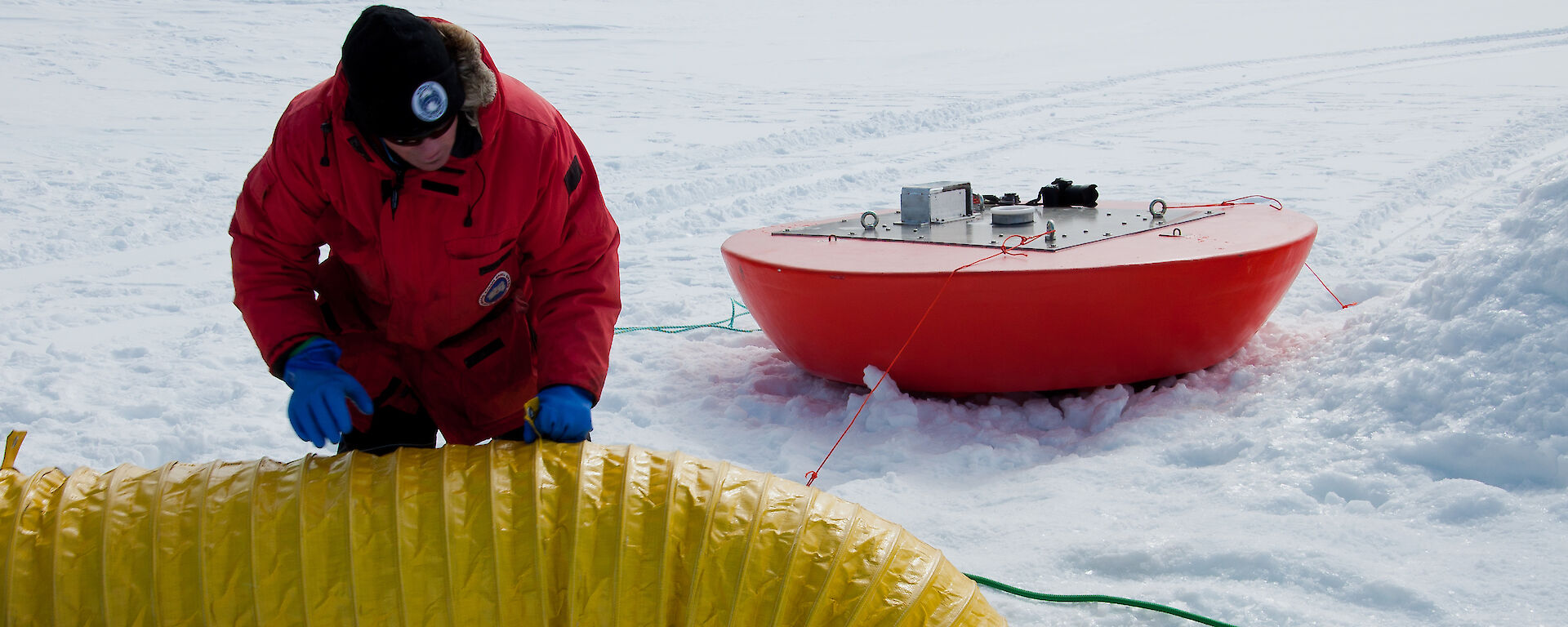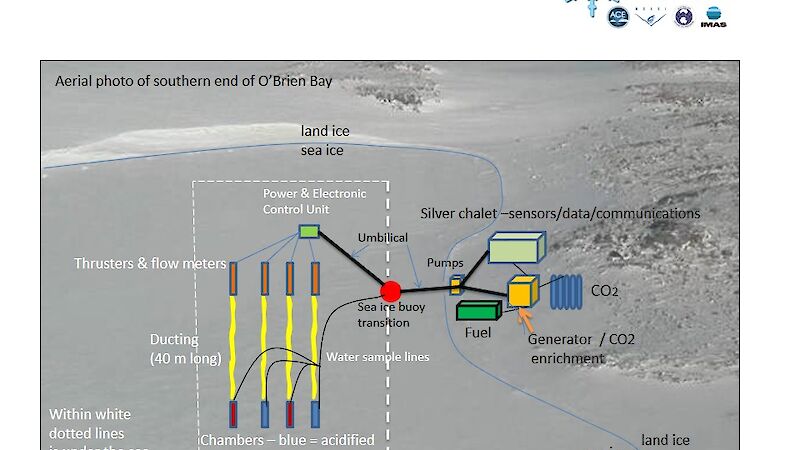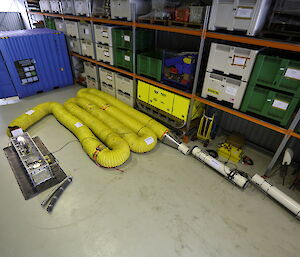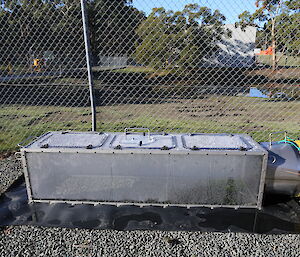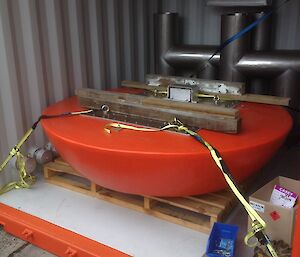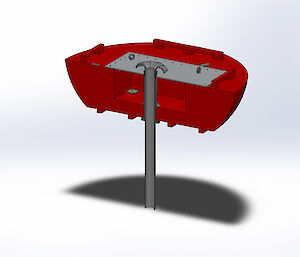The underwater chambers used in the Antarctic Free Ocean CO2 Enrichment (antFOCE) experiment are adapted from a prototype developed by the Monterey Bay Aquarium Research Institute in California. To date, this technology has been deployed in experiments run at sites in deep and shallow temperate waters and in shallow tropical and sub-tropical waters. As a result, the Australian Antarctic Division team has had to adapt the design and deployment of the chambers for the harsh Antarctic conditions.
Earlier this year the team spent several weeks testing the underwater chambers in cold water off the coast of Tasmania, to practice deploying them and ironing out as many glitches in their operation as possible.
The Antarctic chambers are each coffee table-sized acrylic chambers (2 m x 0.5 m x 0.5 m) anchored to the sea floor and sufficiently robust enough to withstand the −1.8°C water temperature.
A series of pipes, linked to pumps, draw seawater to the surface, where it is enriched with CO2 , before being pumped back down under the sea ice and into the two experimental chambers. This provides a constant flow of CO2 -enriched, low pH seawater, through the two chambers.
Sample water drawn up from the experimental and control chambers passes through a series of pH, conductivity, temperature and oxygen sensors in the ‘Silver Chalet’ — our small shore-based control centre above the sea ice (see diagram). Underwater flow meters, thrusters, pH and temperature sensors are all powered from this surface hub.
Data collected from the loggers in the Silver Chalet are wirelessly relayed back to station, allowing our technical team to monitor the experiment’s progress when no-one is on site. Last but not least, time-lapse cameras mounted on top of the chambers record how the structure of surface sediments in the chambers is changing over time.
Sea ice and ‘fast’ ice (attached to land) pose one of the biggest challenges to the success of the project. As there’s a reasonable tidal range at Casey, for the duration of the experiment there will be a few metres of sea ice grinding against the shore, bringing one tonne of force per cubic metre of sea ice.
To avoid this problematic zone, the project’s technical team has come up with an original solution. Water pipes and power and data communication cables will be bundled together into an ‘umbilical’. This umbilical will extend from the shore-based control units and pass over the tide cracks, where sea ice meets and rubs up against the fast ice. They will then run under the sea ice through a pipe running down the middle of a sea ice buoy. This sea ice buoy will sit in a 90 cm wide hole drilled through the ice. In this way the team hopes to cleanly and safely transition between under-ice and shore-based infrastructure, avoiding the problems of tidal flux and moving sea ice.
Another unique addition to the experiment is the use of two ‘mini chambers’, which can be attached to the main chambers for 24–48 hours, to run short-term experiments on individual organisms (such as a sea urchin) or to measure the effects of ocean acidification on photosynthesis. These experiments will demonstrate the potential long-term effects of ocean acidification (over 4 months) and will allow the project team to understand some of the short-term responses and acclimatization of organisms to ocean acidification.

